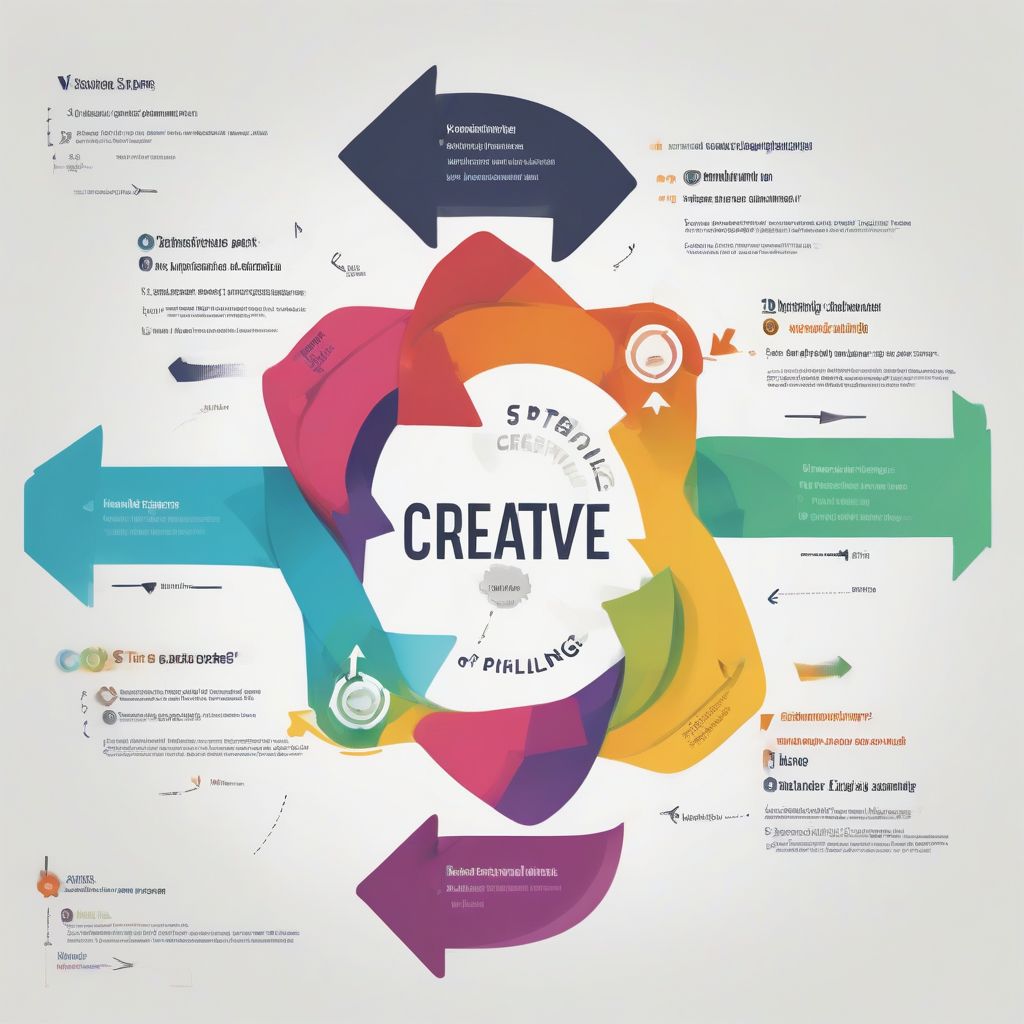Ever wonder how groundbreaking ideas are born? It’s not magic, but a process. Just like following a recipe can lead to a delicious meal, understanding the creative process can unlock your own innovative potential. This step-by-step guide dives deep into the methods used by top innovators, offering actionable insights you can use to transform your own thinking.
Understanding the Foundation of Innovation
Before diving into the steps, it’s crucial to understand what fuels innovation. Like a well-balanced diet nourishes the body, a blend of curiosity, open-mindedness, and a willingness to experiment fuels the innovative mind. Top innovators aren’t afraid to challenge conventional wisdom and explore uncharted territories. They cultivate an environment where “failure” is seen as a stepping stone to success, a crucial ingredient in the recipe for breakthrough innovation.
The Step-by-Step Creative Process
1. Identifying the Challenge: Defining the Problem
Innovation starts with a clear understanding of the challenge at hand. What problem are you trying to solve? What opportunity are you trying to seize? This initial stage involves extensive research, data analysis, and deep empathy for the user or target audience. Like a nutritionist carefully assesses a client’s dietary needs, innovators meticulously define the parameters of the challenge they aim to address.
2. Ideation: Generating a Multitude of Ideas
Once the problem is defined, the next step is to generate a wide range of potential solutions. This is where brainstorming, mind mapping, and other ideation techniques come into play. Don’t censor yourself at this stage – the goal is quantity over quality. Embrace the seemingly absurd, as even the most outlandish ideas can spark unexpected breakthroughs. Think of it like exploring a farmers market with an open mind – you never know what new ingredient might inspire your next culinary masterpiece.
3. Incubation: Letting Ideas Simmer
After the initial burst of ideation, it’s time to step back and let your subconscious mind do the work. This incubation period is crucial for connecting seemingly disparate ideas and allowing new perspectives to emerge. Engage in activities that relax and refresh your mind, such as taking a walk in nature, listening to music, or even meditating. Just as a good marinade enhances the flavor of a dish, this downtime allows your ideas to mature and develop.
4. Illumination: The “Aha!” Moment
This is the stage where the magic happens. A sudden flash of insight, a new connection, or a novel solution emerges seemingly out of nowhere. This “aha!” moment can strike at any time, often when you least expect it. It’s that moment when all the ingredients come together to create a perfectly balanced and flavorful dish.
5. Evaluation and Refinement: Shaping the Idea
Once you have a promising idea, it’s time to put it to the test. Evaluate its feasibility, potential impact, and alignment with your overall goals. This stage involves prototyping, testing, and gathering feedback. Just as a chef tastes and adjusts the seasoning of a dish, innovators refine their ideas based on real-world feedback and data.
6. Implementation: Bringing the Idea to Life
The final step is to bring your idea to life. This involves developing a detailed plan, securing resources, and assembling a team to execute the vision. This is where the rubber meets the road – turning a brilliant idea into a tangible reality. It’s like finally presenting your meticulously prepared meal to your guests and enjoying the fruits of your labor.
Examples of Innovators and Their Processes
Consider Thomas Edison, whose relentless experimentation led to the lightbulb. Or Steve Jobs, whose focus on user experience revolutionized the tech industry. These innovators embodied the principles outlined above, demonstrating the power of a structured creative process.
“Innovation distinguishes between a leader and a follower.” – Steve Jobs.
 Creative Process Steps
Creative Process Steps
Applying the Creative Process to Your Life
The creative process isn’t just for inventors and entrepreneurs. It’s a powerful tool for anyone looking to solve problems, generate new ideas, and achieve their goals. Whether you’re developing a new marketing strategy, planning a healthy meal, or simply trying to improve your daily routine, the principles outlined in this guide can help you unlock your own innovative potential.
Conclusion
The creative process is a journey, not a destination. By embracing the steps outlined above, you can cultivate a mindset of continuous innovation and achieve breakthroughs in any area of your life. Remember, the key is to remain curious, open-minded, and persistent. Don’t be afraid to experiment, fail, and learn along the way. Now, take these insights and apply them to your own challenges. What innovative solutions can you create? Share your thoughts and experiences in the comments below!
- Hardcover Book
- Jaouad, Suleika (Author)
- Hardcover Book
- Nguyen, Joseph (Author)
- The Original Creative Thinking Journal
- #1 Guided Journal for Creative Thinking (also check out our ALL Ages edition- 13 yrs and up-on Amazon)
- Henderson, William (Author)
- English (Publication Language)
- Amazon Kindle Edition
- Fletcher, Angus (Author)
- Book - think and grow rich: the landmark bestseller now revised and updated for the 21st century (think and grow rich series)
- Language: english
- Kanelos Weiner, Jessie (Author)
- English (Publication Language)
- Stein Greenberg, Sarah (Author)
- English (Publication Language)
- Michalko, Michael (Author)
- English (Publication Language)










